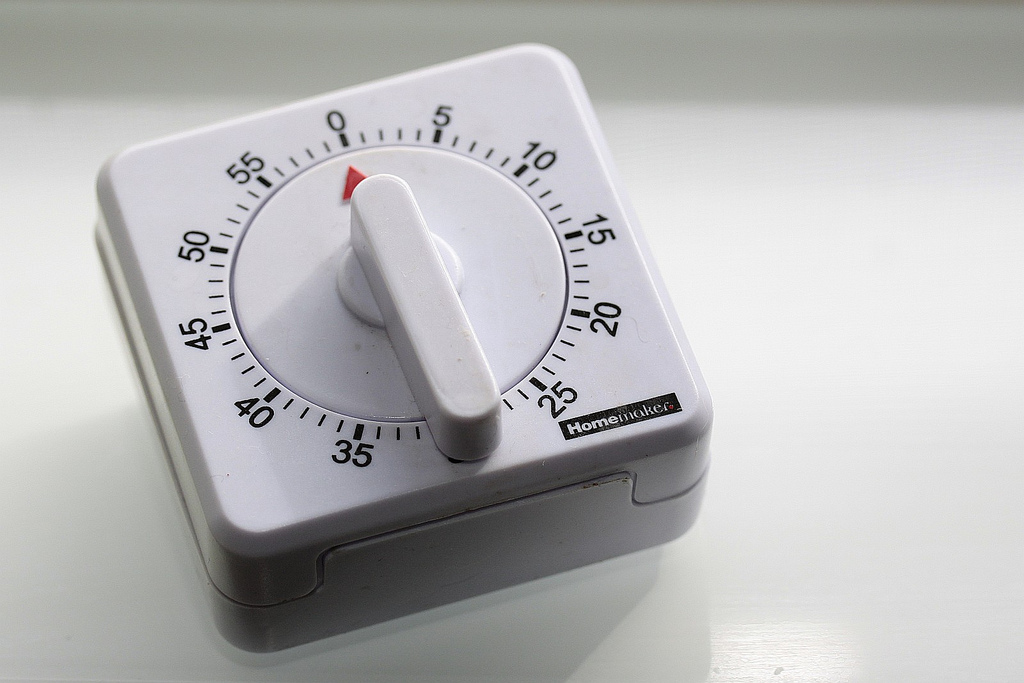Productivity Hack: Set a Timer
 In the last couple months, various areas of my life have become busier. My work life, home life, and freelance career have all been more hectic. So finding creative time has been even more difficult, but just as important.
In the last couple months, various areas of my life have become busier. My work life, home life, and freelance career have all been more hectic. So finding creative time has been even more difficult, but just as important.
I wanted to report back on a technique I alluded to previously and how it has been working for me.
Unf*** Your Productivity
Unf*** Your Habitat is a blog and app with the tagline “Terrifying motivation for lazy people with messy homes.” I’m not so sure I’m lazy, but I’ve successfully adopted the creator’s motivational technique of setting a timer and working for short chunks of time to clean or organize parts of my house.
I thought that this technique would also work well for other areas of my life where I needed some motivation, such as writing or researching, either at night when I’m tired after a long day of work or at work when I’m tired from juggling all the different roles in my life (mom, wife, freelancer, employee, etc.).
I’ve been successfully setting the timer on my phone for short segments of time–20, 30, or 45 minutes depending on time available, the job I need to do, and my energy level–and then working until the timer goes off.
At that point, I can either stop or keep going, taking a break or plowing through for another chunk of time.
Why It Works
Knowing that I have this set amount of time
- helps me focus (having an amount of time with designated limits to work helps quiet my “monkey mind,” as the Buddhists put it)
- reduces overwhelm (knowing I have a set stopping point, if I want it, makes it easier to motivate myself to start)
- adds up (I don’t have to stop after the timer goes off–often it’s just what I need to get myself into the groove, and I find myself setting the timer again).
Break It Up
There’s another element of this method: the breaks. The UFYH technique is to give yourself breaks in-between chunks. So, for instance, 20-10s are 20 minutes of working with a 10 minute break in-between, while 45-15s are 45 minutes of working with a 15 minute break in-between.
Whether or not I abide by this also depends on various factors, such as how long I plan to work overall, my degree of focus or “flow” when the timer goes off, and so forth.
If I’m not planning to work long overall, such as at night when I’m already exhausted, and I manage to get myself into a good level of “flow,” I’ll often just set the timer again and keep on going until I’m ready to stop. I don’t want to lose my concentration.
However, if I’m at work and I’m doing something that’s not particularly flow-worthy (researching, writing interview questions, and so forth), I’ll usually go ahead and take that mental break, getting a snack or checking in with Twitter for a little bit.
Whether at work or at home, I’ve found the key is to set the timer for the break as well. It’s easy to get sucked down the rabbit hole of social media and then realize way too much time has passed.
More
I’m still interested in learning more about the Pomodoro Technique, which looks like a higher-level version of this method, but I’ve not yet had the time to read up on it.
I hope this is helpful! Let me know if you use this hack and how it works for you.
Now I better go set a timer to get my taxes done.